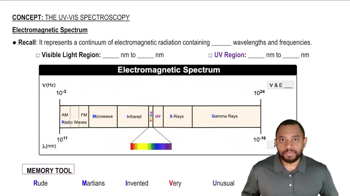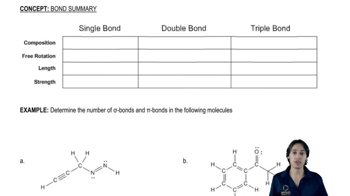Which of the following compounds has a vibration that is infrared inactive?
1-butyne, 2-butyne, H2, H2O, Cl2, ethene
 Verified step by step guidance
Verified step by step guidance Verified video answer for a similar problem:
Verified video answer for a similar problem:



 16:4m
16:4mMaster General Features of IR Spect with a bite sized video explanation from Johnny
Start learning